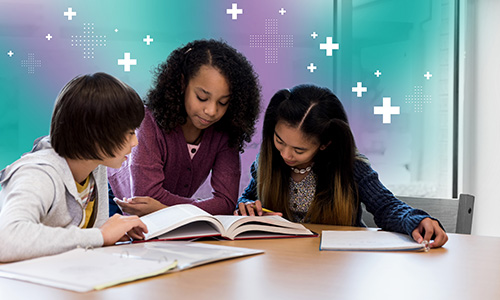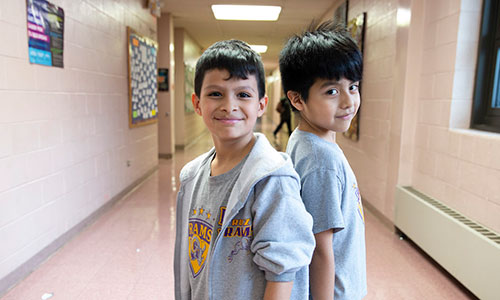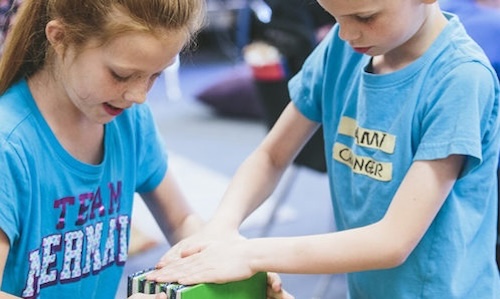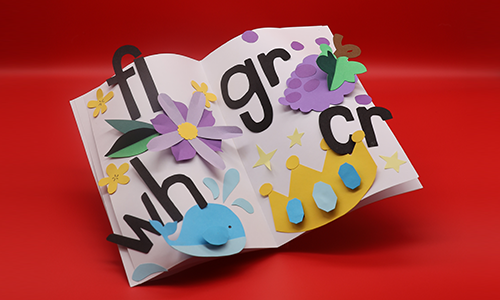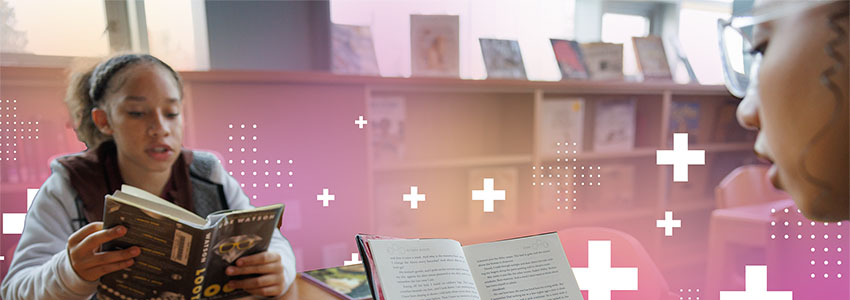
For years now, the early literacy education community has been talking about the need to reform our practice to align to the science of reading. But what is the science of reading? And how can it improve our practice so kids become better readers?
What is the science of reading?
The science of reading is the converging evidence of what matters and what works in literacy instruction, organized around models that describe how and why.
One research study does not make a science. In early literacy alone, tens of thousands of studies have been published, and some even show results that are at odds with one another. For educators to be able to consume research meaningfully, we need to look for a convergence of evidence. When many well-designed studies point to a similar result, we should pay attention.
How does it help us make sense of reading?
An important model in early reading research is the simple view of reading. It says that reading comprehension (RC) is the product of decoding (D) and language comprehension (LC), or RC = D x LC.
RC = D x LC
Learning to read for understanding requires sounding out and recognizing words—decoding—but it also requires making meaning of the words and sentences we hear—language comprehension. While taking a microscope to any one aspect of reading reveals more complexity, the simple view continues to be supported as a strong core model in reading development, as it has been for decades.
What guidance does the science of reading offer?
Research is clear about what matters to teach in early literacy instruction: phonological awareness, phonics and word recognition, fluency, vocabulary and oral language comprehension, and text comprehension. For each of these, a convergence of evidence tells us what works, in practice.
- Phonological awareness: Teach students to recognize and manipulate the sounds within words. Move from syllables to the individual sounds, or phonemes. Explicitly connect phonemes to letters to more effectively support word decoding.
- Phonics and word recognition: Teach letter sounds and sound-spelling patterns explicitly and systematically. Practices that include both reading and writing of words in isolation and in text are most supportive of taught phonics.
- Fluency: Include frequent chances for students to read and re-read orally from connected text—sentences, paragraphs, and passages. Focus on the development of both automatic word recognition and fluent expression, keeping understanding of the text as the central goal.
- Vocabulary and oral language comprehension: Include high-quality, language-rich interactions in instruction. With read-aloud texts, unpack academic and inferential language. Explicitly build students’ recognition of shared morphemes (e.g., root words, affixes) across words, both in oral and written language.
- Text comprehension: Even before young students can read on their own, teach from rich texts via read-alouds and scaffolded reading. Teach students to use metacognitive strategies like setting a purpose, monitoring for meaning, and building inferences while reading. Discuss texts, including focusing on their organizational structures.
What could a science-of-reading classroom be like?
To align more closely to what the science tells us, we should start seeing and hearing some change. We should stop seeing only incidental teaching of sound-spelling patterns. Instead of just happening to notice a silent E on the page we have open—aha! Teachable moment!—we should teach decoding skills systematically. We should see a dedicated portion of the literacy block where phonics is taught clearly and sequentially from an identifiable curriculum. When kids learn from our planned sequence how that silent E works, we should see engaging practice—word work, often masquerading as play—followed by both reading and writing practice that applies those silent E skills purposefully.
We should also stop seeing comprehension taught via leveled reading groups, where each group visits the teacher for round-robin reading through a new text “at the right level.” Instead, we should see use of a rich, complex text for all the students in a class. We should hear multiple reads of the same text, beginning with teacher modeling and moving to student practice. We should see partnering for repeated readings to develop fluency. We should hear the voices of students and the teacher in high-quality conversations about the text that focus on language, structure, and deepened understanding.
Where can we learn more?
Lots of good materials have been produced to get this research into practice, much of it paid for by our tax dollars.
- The renowned Florida Center for Reading Research has printable research-to-practice student center activities for pre-kindergarten to fifth grade. Many could be used at home, too.
- The Institute of Education Sciences has developed a website for families called Supporting Your Child’s Reading at Home. It is packed with information, activities, and video examples for supporting children in kindergarten through third grade. Their What Works Clearinghouse has two teacher guides for early literacy: one focuses on foundational skills and the other on reading comprehension.
These excellent research-to-practice materials can only help if we actually use them. Commit to building a learning community around one or more of these materials, beginning by downloading and reading as a group. Then discuss, try things with students, reflect, and repeat. This is how the science of reading matters, and how it works: by helping all our kids to become empowered and thoughtful readers.
For more on the science of reading from NWEA, see “The science of reading and balanced literacy: What you need to know,” Everything you need to know about the science of reading, and The science of reading for leaders: Helping your teachers shift instructional practice.

